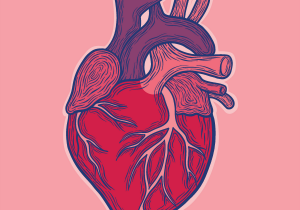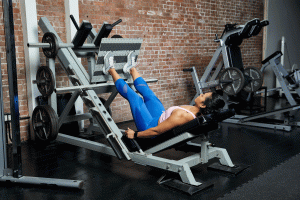
What is PoTS and Orthostatic Intolerance?
Postural orthostatic tachycardia syndrome (or PoTS) is a condition where the heart rate rises more than would be expected when sitting up or standing. It can range from being mild and well controlled, to severe and extremely debilitating.
The key problem with PoTS is one of blood return. When we stand up blood drops from our upper body down towards our abdomen and legs. In someone who does not have PoTS, their body will automatically adjust but raising the heart rate slightly, and tightening the blood vessels and muscles in the lower body to help push the blood back up to the upper body. In someone with PoTS, this process of adjusting in order to return blood to our upper body doesn’t work properly, and the lack of blood coming back to the heart and brain can a range of symptoms including fainting, dizziness, palpitations and more. The cause of PoTS can vary, from problems with the brain sending the correct signals, to having overly stretchy muscles and blood vessels that aren’t able to tighten effectively.
PoTS is usually tested for with a tilt table test, where a patient’s heart rate and blood pressure are monitored while lying down, and then they are swiftly brought to an upright position while being continually monitored. A heart rate increase of more than 30 beats per minute for more than 30 seconds gives a definition of PoTS. A heart rate increase of less than 30 beats per minute is classed as ‘orthostatic intolerance’.
How does it affect exercise?
When we use muscles, blood rushes to them in order to provide the oxygen they need to keep firing. For people without PoTS, the body is able to flush these muscles with blood while also continuing to provide a healthy supply of oxygen to the brain. But in PoTS patients that blood return doesn’t happen. Effectively the blood rushes to the muscles being used and then doesn’t come back up again.

So if you’re doing squats in the gym or warrior poses in yoga and you’re leg muscles are feeling the burn, your body will be supplying those muscles with plenty of freshly oxygenated blood. Great for increasing strength but less great if the blood isn’t getting back up to the lungs and brain so you become breathless and dizzy.
On top of all of this, raising your hands above your head (be that with an overhead press or because you’re dancing to music) can cause problems because it encourages blood to drop into the lower body, so we can’t raise hour arms either.
The difficulty is, many group classes, strength exercises, and the majority of cardio is doing while upright, and we often need to raise our hands above our heads. And we haven’t even touched on common exercises that involve getting up and down off the floor, which is a major PoTS no no. Burpees are our enemy!
So all in all, exercising with PoTS can be tough, and it can trigger major symptoms including fainting (syncope).
How can exercise help improve the symptoms of PoTS?

Despite the potential for exercise to trigger or exacerbate PoTS, keeping fit and strong is a key part of managing symptoms.
The aim of exercising with PoTS is to improve how well your body is able to pump blood around your body, and in particular how well it can return blood from the lower half of your body to the top half.
Maintaining a good level of cardiovascular fitness is really important for patients with PoTS. Being fit will help your heart to pump the blood around your body effectively, and both cardio training and strength training of your central and lower body will help tighten your muscles to help the blood return.
Many doctors will recommend exercising to help PoTS, and we here at Chronically Awesome want to support that.
What adjustments can be made while exercising?
Trust us, we know how hard exercising with PoTS is, and it’s never fun to have to drop onto your back with your legs in the air in the middle of a class to wait for your vision to come back and your chest pain to pass. But there are things that you can do to make exercising effective, safe, and free of symptoms.
Employ your lifestyle adjustments
We know that compression wear, plenty of fluids, salts and electrolytes help, and many of us are medicated. Before any workout try to drink a litre of fluid, preferably with added electrolytes and have more on hand for while you’re working out, time your medication so that you take it an hour before you work out, and wear plenty of compression clothing – you can even layer knee high compression socks over compression leggings!
Know what to avoid and how to change it
The biggest thing that can help is understanding what’s going on in your body, and why it’s causing you symptoms. This post will help with that, but there’s additional links at the bottom of the page to help too. By understanding the mechanisms that are or aren’t working in your body, you’ll be better equipped to understand how to change what you’re doing to fix the problem. Your understanding will also be valuable when it comes to working with instructors and personal trainers who probably won’t have a good understanding of PoTS and will need you to explain it to them!

Recumbent bikes and rowing machines are our friends
Not all cardio training is done upright. Recumbent bikes (the ones that have back rests) and rowing machines allow us to get the blood pumping and our hearts working without the issue of poor blood return causing problems. Many people are recommended the Levine Protocol, which was designed as a way for PoTS patients to get fit again after a period of inactivity. It slowly builds your fitness and stamina using a recumbent bike so that your symptoms remain controlled, working up over months towards upright cardio that will challenge your PoTS more.
Avoid static holds in favour of constant movement
Holding a position like a lunge or a chair pose in yoga is going to continually flush blood to your legs without the opportunity for blood to return up to your upper body. To help this, try slowly pulsing up and down to allow your body to return the blood higher. You may be the only one moving in a class while everyone else is still, but it’s better than passing out and will still give your muscles a good workout.
Machines are a valuable tool

Some people are disparaging of the machines you find in gyms, but they can be a really valuable tool in your strength training journey. You’ll find machines that allow you to work your leg muscles while sat down, some that have your legs above your head! Others will enable you to do work overhead while sitting down. They can be particularly useful if you have hypermobility – a common cause of PoTS – as machines can limit your range of movement to stay within a healthy range rather than hyperextending.
Sit down to do overhead work
If you’re using weights and you want to work your shoulders, upper back and arms with overhead movements, do them sitting down. While this will work your core less, it will allow blood to drop but not so far that it will trigger symptoms.
Got other useful tips? Got questions?
Drop us a comment below or an email at hello@chronicallyawesome.org.uk and we’ll get back to you ASAP.
Useful links & resources
Find out more about PoTS from the NHS here.
Find out more about the symptoms of PoTS here.
Find out more about diagnosing PoTS and OI here.
Instructions for completing the Levine Protocol here.

